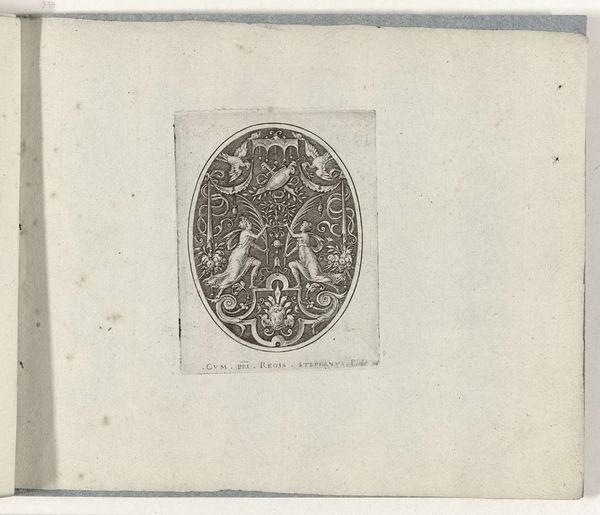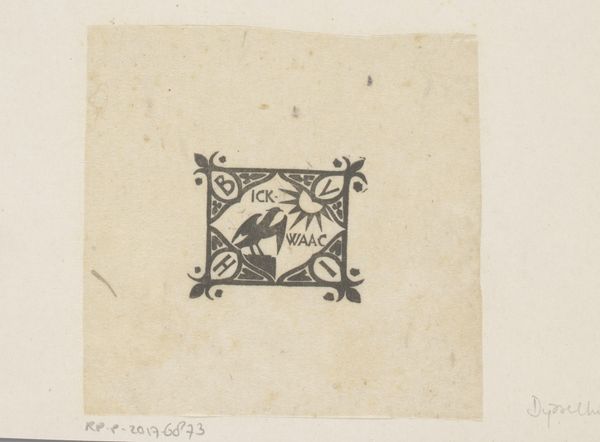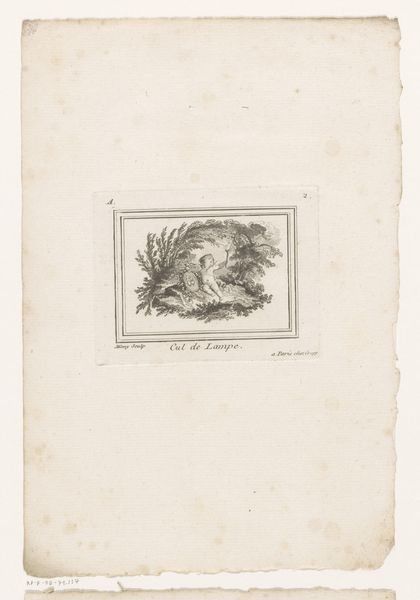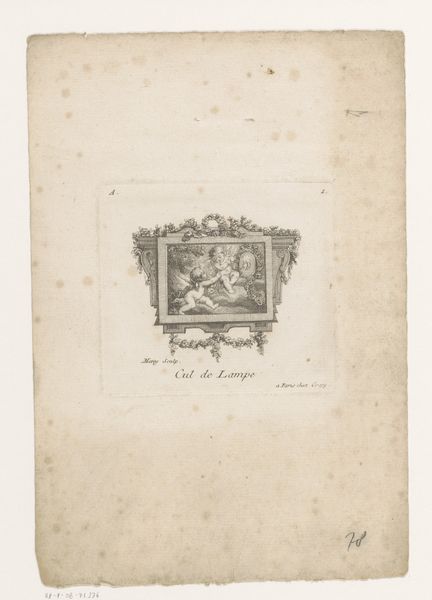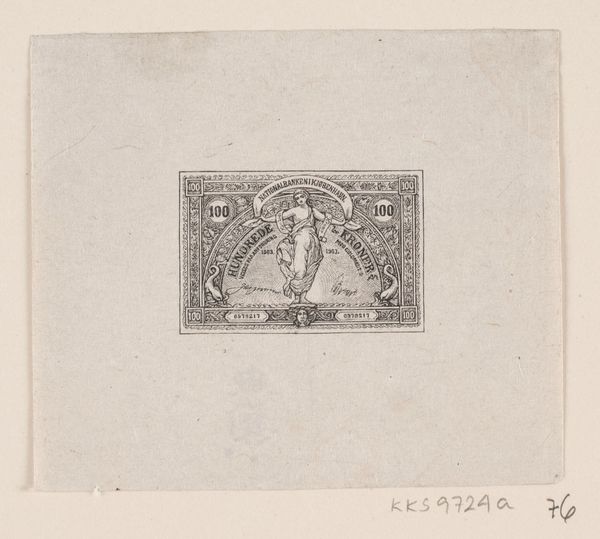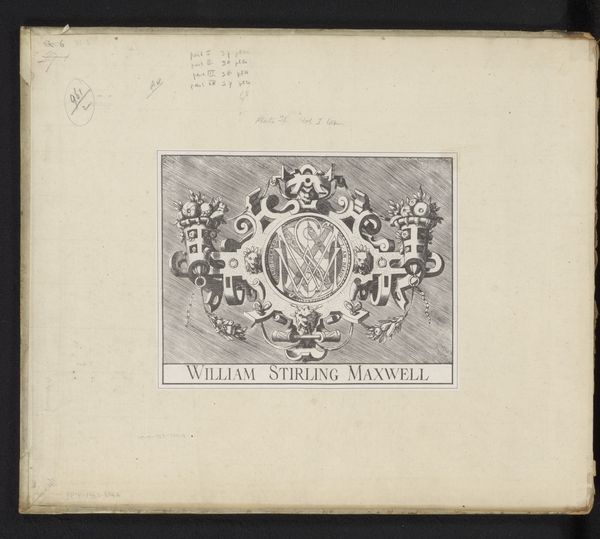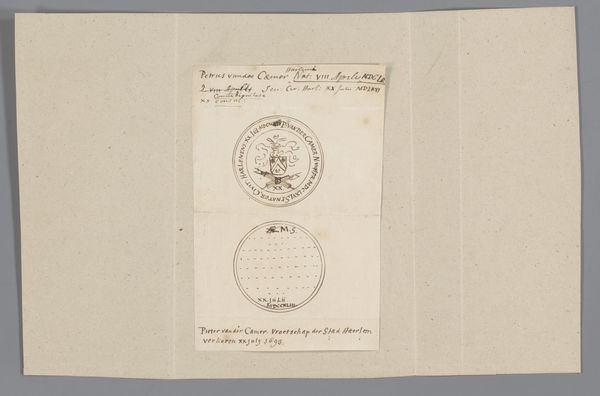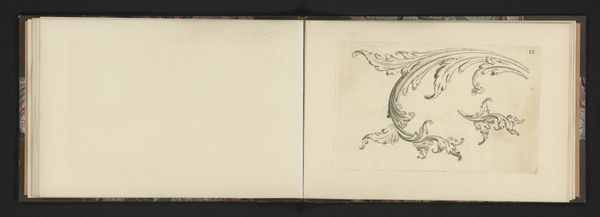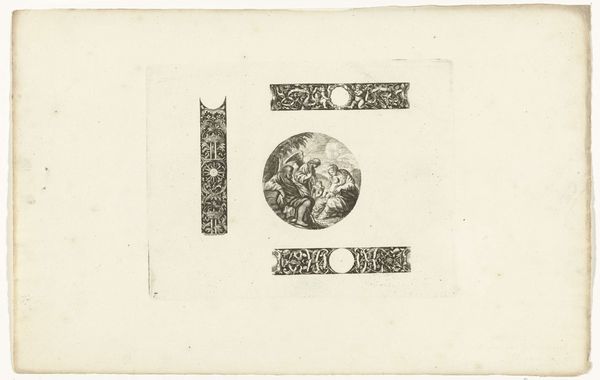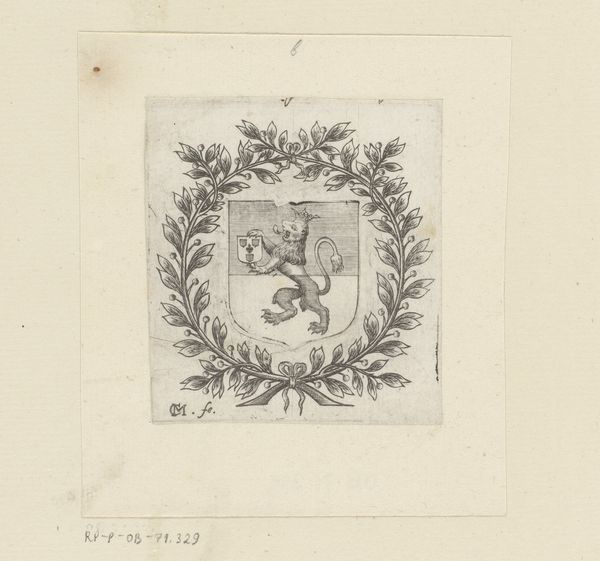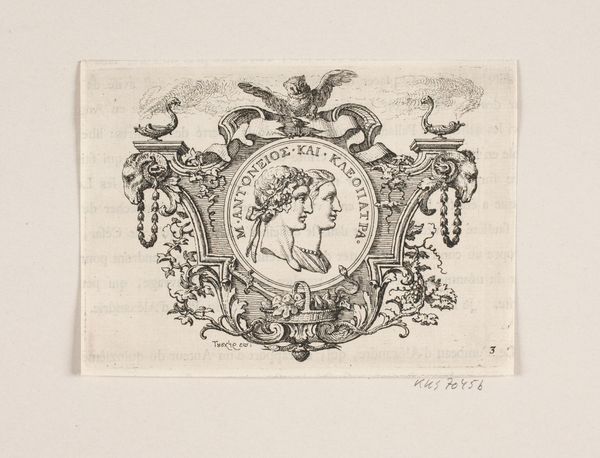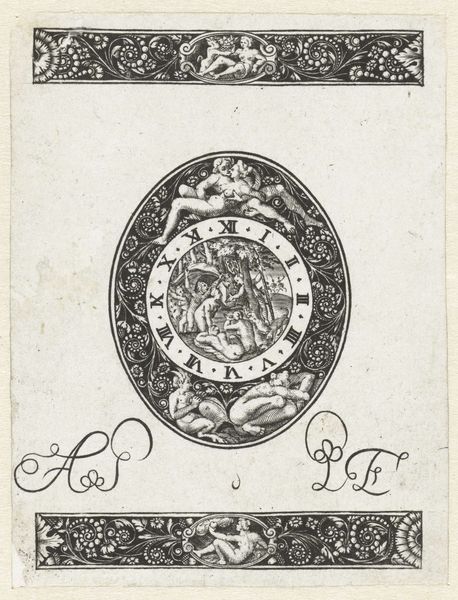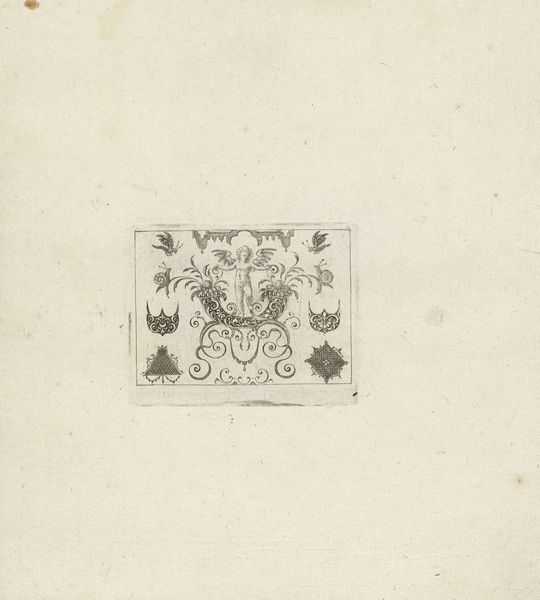
Ontwerp voor een ex libris met een vogel en de initialen B.O. 1887 - 1924
0:00
0:00
juliedegraag
Rijksmuseum
drawing, print, paper, ink, woodcut
#
drawing
#
art-nouveau
# print
#
bird
#
figuration
#
paper
#
ink
#
woodcut
#
symbolism
Dimensions: height 103 mm, width 82 mm
Copyright: Rijks Museum: Open Domain
Curator: Here we have Julie de Graag's "Ontwerp voor een ex libris met een vogel en de initialen B.O.," a woodcut and ink drawing on paper created between 1887 and 1924, currently held in the Rijksmuseum collection. Editor: It’s a striking little emblem! The high contrast gives it a rather solemn air. And yet, those spiraling tendrils soften the austerity. What can you tell me about the design itself? Curator: It's a fascinating piece that intertwines the symbolism of the bird, common in the Art Nouveau and Symbolist movements, with the personal identity indicated by the initials "B.O." Think about how the image likely functioned. Who was "B.O.," and what did they stand for during the historical moment when women, like De Graag, were striving for visibility and agency in the art world? Editor: Indeed. Visually, the bird seems self-contained, framed not only by the black border but also those inward-curling lines. The initials almost seem like a signature branded on the creature itself. Do you think it possible this reflects ownership or perhaps constraint? It seems poignant given De Graag's own journey as a woman artist. Curator: I think that's a valid interpretation. We must consider that birds often signify freedom, flight, even transcendence, but here the bird is somewhat grounded, enclosed. Considering De Graag's political associations—her commitment to pacifism, for example—it can be viewed as the repression of free thought and action in the face of societal norms. Editor: Right. I hadn't considered her pacifism! In terms of its iconographic presentation, the heavy outlines remind me of medieval woodcuts; it taps into a long tradition, consciously or unconsciously. Yet the framing and bird itself become a stylized, Art Nouveau object, losing its original connection to the natural. It's been reborn into a symbol of intellectual containment, as you mentioned, or simply an indication of identity. Curator: It all becomes part of a multi-layered conversation: the symbolism of the natural world, personal identity, artistic freedom, and socio-political realities, distilled into one miniature work. Editor: De Graag manages to make the symbolic incredibly intimate through a restricted palette and delicate linework, encouraging us to think critically about historical power structures. Curator: An elegant design that belies complex and relevant social questions. Editor: Precisely. This small emblem proves art’s lasting ability to speak across time.
Comments
No comments
Be the first to comment and join the conversation on the ultimate creative platform.
